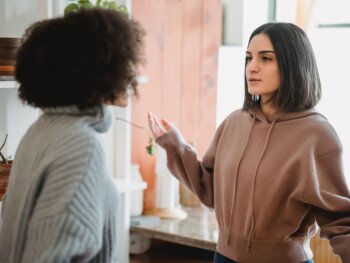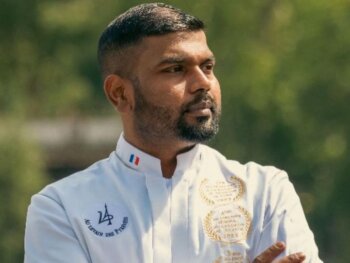
The Indian Dance Group We Are One Celebrates Their Differences By Ignoring Their Disabilities
Lifestyle Jan 28, 2019
We Are One (WAO), a group of multi-talented artists are proving to India, and the world, that in spite of having physical disabilities, dreams are still achievable. That said, WAO seeks to remove the ‘dis’ when describing one’s abilities and, instead, views each of their members as being differently-abled. The Indian dance group We Are One celebrates their differences by ignoring their disabilities.
Based in New Delhi, India, WAO was founded by its current director, Husnain, in November 2016. Husnain, who is also differently-abled, was a dancer for a number of years and faced hardships as a result of his chosen profession as he uses a wheelchair. Instead of allowing these tribulations to keep him down, Husnain used his experience and passion to create an inclusive environment with WAO for other differently-abled persons. Husnain saw that there was an abundant number of talented artists in India, much like himself, whose potential was remaining undiscovered because they did not conform to the traditional expectations of what an artist should look like due to their ‘disability.’

WAO provides an outlet and opportunity for differently-abled artists to share their talent with the world by performing on wheelchairs and crutches. Meanwhile, WAO’s performances also feature artists who hearing or speech impaired.
Alka Sah, the Assistant Director of WAO, who is hearing impaired, gave me some insight into WAO. Sah explains that, at the outset, WAO was comprised of six differently-abled persons, with three of them being hearing impaired. However, since the company launched in 2016, their troupe has grown substantially and is now made up of 85 performers.
If you weren’t already impressed by WAO’s talent and tenacity, hang on to your hat: they primarily train and put on shows featuring traditional Bharatanatyam and Kathak dances. Bharatanatyam is one of the most renowned and antiquated dances hailing from India, with roots in the “‘Natya Shastra,’ the ancient Sanskrit Hindu text on the performing arts,” according to Cultural India. Similarly, Kathak was very popular in India and was revitalized at the turn of the 20th century in an effort to save the traditional form of dance. Cultural India notes that Kathak is often comprised of “rhythmic foot movements, hand gestures, facial expressions and eye work” and was often used as a form of storytelling.
Since their founding in 2016, WAO has captured the hearts of audiences throughout the world and have danced their hearts out on more than 300 stages. According to Sah, WAO’s artists have put on shows in a multitude of countries, including the USA, UK, Canada, Dubai, Italy, Russia, and Singapore.

Stereotypes Surrounding Disability In India:
According to The Diplomat, as of 2018, there are more than 26 million people who have some form of disability. Meanwhile, The India Express highlights that approximately 1,755 out of 100,000 people in India are differently-abled to some degree.
However, narrowing down true figures is difficult to do since disability is a taboo subject in India, and the South Asian community, as a whole.
According to UNICEF, especially in countries like India where disability is viewed negatively, children who are discovered to have disabilities, are viewed as being less than and are frequently kept inside the home. This dismal outlook can severely impact a differently-abled person’s ability to get an education, find work, seek independence and take part in everyday life, and circumvents their right to think for themselves. And, unfortunately, these limitations are twofold for the female sex, as they are even less likely to be able to find a life of their own if they have a disability.
These misunderstandings about disability are the result of a lack of education about what being differently-abled actually means, as well as cultural taboos. For example, often disability is, according to UNICEF, typically “rooted in negative or paternalistic assumptions of incapacity, dependency and difference that are perpetuated by ignorance.” Meanwhile, South Asian culture inflicts shame upon families who have a differently-abled child as it is associated with one’s karma. Stanford highlights this problematic cultural belief, which notes that families, at all caste levels, who wind up with a differently-abled child are being admonished by higher powers for their transgressions in previous lives.
That being said, according to NCBI, The Rights of Persons with Disabilities Act, 2016 was passed and makes significant strides to help a variety of differently-abled persons, including those who experience “muscular dystrophy, [are] hard of hearing, [or have a ] speech and language disability.” As well, NCBI outlines the protections awarded to differently-abled persons as indicated in The Rights of Persons with Disabilities Act, 2016. For instance, NCBI explains that governing bodies must safeguard each differently-abled persons “…right to equality, life with dignity, and respect for his or her own integrity equally with others.” This means that differently-abled persons should be provided with necessary and practical modifications that allow them equal opportunities to schooling and work.
Meanwhile, according to NCBI, The Rights of Persons with Disabilities Act, 2016 the government is meant to protect differently-abled persons from prejudice and to accomplish this, they will devise educational campaigns. As well, in 2016, the government also established a five-year plan to upgrade public spaces to ensure that they can be accessed by everyone, including differently-abled persons.
That being said, this Act and its initiatives are a significant step in a positive direction for differently-abled persons. However, there is still a lot of work to be done within the South Asian community to break down the stereotypes surrounding disabilities as they are deeply embedded in cultural beliefs.
This is why organizations, such as WAO are so important, as they are breaking down the stigmas surrounding what differently-abled persons can do and achieve. For example, Sah describes that audiences who go to WAO’s performances, although they are aware that the dancers are differently-abled “when they see their performances they forget that a differently able person is is performing Bharatnatyam in a wheelchair.”
Community Work & Achievements:
WAO provides workshops to children in schools, which is important as it begins to condition children at a young age to not think negatively about differently-abled children. For example, Sah explains that they teach physically abled persons about inclusion, dance, and why not putting “dis” in ability is important.
Meanwhile, Sah explains that WAO trains differently-abled artists in “dance drama, therapeutic theatre, and lights and sound.” Many of the performers also possess other skills and are able to work as “choreographers, technicians, artistic managers, and logistics managers,” according to Sah. And this is important because one of the key attributes of WAO is that it offers an opportunity for their differently-abled and talented performers to have a livelihood and independence.
On another note, one of WAO’s most exciting and memorable shows was in Singapore where they performed at the “True Colours” Asia Pacific Festival for Artistes with Disabilities in March 2018 in Singapore. Sah proudly gushes that WAO was able to represent India at the event and “presented the Indian cultural art form of Bharatnatyam on wheels in front of the President of Singapore, Halimah Yacob. Their performance was well-received by the audience and Singapore’s president, and led to them being selected to have the lunch with her!”

But that’s not all, in a few short years, WAO has achieved some stellar accomplishments, including the following:
- Gulshan Kumar of WAO holds the Guinness World Record for the most number of manual spins on a wheelchair (63 spins in a minute).
- Alka Sah of WAO received “The Rays of Hope Award” from The Dance India as part of their International Women’s Day Awards for her work in the arts and sharing India’s culture across the globe.
- WAO has performed on many reality shows, such as Dance India Dance (DID), Entertainment Ke Liye Kuch Bhi Karega, India’s Got Talent, and Satye Mav Jayate to name a few.

So, What’s Next For WAO?
Aside from continuing to break down the barriers and stigmas for differently-abled persons in India, and within the South Asian community as a whole, WAO will be preparing for their performance in Rishikesh next month – we wish them luck!
Main Image Photo Credit: www.facebook.com
Devika Goberdhan | Features Editor - Fashion
Author
Devika (@goberdhan.devika) is an MA graduate who specialized in Political Science at York University. Her passion and research throughout her graduate studies pushed her to learn about and unpack hot button issues. Thus, since starting at ANOKHI in 2016, she has written extensively about many challe...













































































































